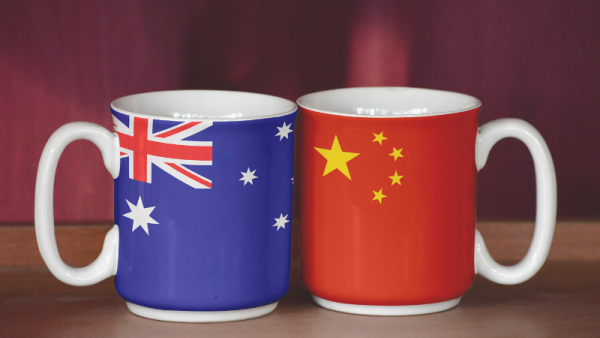Perspectives | An Australian perspective on the People’s Republic of China’s national emissions trading scheme
Aritra Deb / Shutterstock

Xunpeng Shi, Principal Research Fellow, Australia-China Relations Institute, University of Technology Sydney |
Perspectives is UTS:ACRI's commentary series, featuring a piece on a topical subject in the Australia-China relationship from an invited expert contributor.
After a decade of preparation, with pilot plans having first been unveiled in 2011, the People’s Republic of China’s (PRC) national emissions trading scheme (ETS) started operating on July 16 with a trade of 4.1 million tonnes of carbon dioxide (CO2) quotas worth 210 million yuan ($44 million).
While covering just the power sector in its initial phase, the PRC’s ETS has become the world’s largest carbon market. It regulates 2162 companies and covers about 4.5 billion tons of CO2 equivalent, accounting for approximately 40 percent of the PRC’s emissions and 12 percent of global emissions.
The ETS is expected to cover eight sectors which make up 50 percent of the PRC’s total emissions, including power generation, petrochemicals, chemicals, building materials, steel, non-ferrous metals, pulp and paper, and aviation.
The closing price of 51.23 yuan ($10.80) per tonne in the first day of trading is close to the 2020 surveyed price but more than the average ETS pilot prices in the past two years of 40 yuan ($8) per tonne. It is one-eighth of European Union ETS prices of about €55 ($89) per tonne, which is expected to increase to as much as €80 ($129) a tonne by 2026.
Due to factors such as the absence of an absolute emissions cap, the low penalty for non-compliance, and the allocation of all tradeable allowances to companies free of charge, the short to medium-term impact of the PRC’s ETS on the carbon market are uncertain. In the longer term, however, if Beijing’s commitments to peak carbon dioxide emissions before 2030 and zero emissions by 2060 are to be realised, it is necessary for its ETS to be effective in promoting emissions reductions.
Although exactly how much in the way of emissions reductions the PRC’s ETS will ultimately be able to deliver is yet to be seen, Australia needs to prepare for the game-changing potential of this initiative and its effects on the primary markets for Australian exports of coal, liquefied natural gas (LNG) and iron ore.
Iron ore, Australia’s top export to the PRC, seems safe at this point in time given the steel industry is yet to be covered by the ETS, but it is likely to be impacted in the not too distant future. The steel industry, the PRC’s largest source of industrial carbon emissions, comprising 15 percent of its total national emissions, has proposed to peak its emissions by 2025 and further cut them by 30 percent by 2030. Carbon prices in the steel sector will push up the prices of steel and, accordingly, reduce demand for it.
More broadly, achieving economy-wide carbon neutrality will require the PRC to reduce, reuse and recycle resources, including scrap steel. These changes in resource consumption behaviour will also have a negative impact on iron ore in the long run.
Coal demand will also be negatively impacted. Until Beijing’s suspension of Australian coal starting October 2020, Australia had exported $7.3 billion worth of coal to the PRC in the first six months of that year, an increase of eight percent compared with the same period in the previous year. In 2019, Australia had exported about $14 billion worth of coal to the PRC. In 2020, coal-fired power generation accounted for 61 percent of total generation in the PRC and coal for power generation accounted for more than half of the PRC’s total coal demand. But the ETS will likely reduce the competitiveness of coal in the PRC’s energy mix.
President Xi Jinping’s pledge in April this year to limit the increase in coal consumption in the country’s current Five-Year Plan and phase it down in the next Five-Year Plan (2026-2030) may signal a significant dampening down of coal demand in the next 10 years. One projection anticipates that a phaseout of coal power generation in the PRC will be possible by either 2045 or 2055, meeting either the Paris Agreement goal to limit global warming to 1.5°C or well below 2°C.
Ultimately, how Australian coal exports will be affected will depend not only on PRC demand, but also its trade policy towards Australian coal – for example, whether its suspension of Australian coal will continue – and its domestic industrial policy. The PRC’s National Development and Reform Committee on July 16 said that it planned to add nearly 110 million tonnes per annum of advanced coal production capacity in the second half of 2021 to meet increasing demand for fossil fuel. Given high levels of current demand, tight restrictions on domestic coal production could boost ‘cleaner’ coal imports, including thermal coal from Australia, which has a higher energy content and lower impurities. That said, it may be unlikely that the PRC’s ETS will favour Australia’s cleaner thermal coal. Even if Australia’s coal has a small emissions advantage, the cost-saving from reduced carbon costs may not be able to incentivise significant switching to Australian coal.
The PRC’s ETS may also contribute to increased global political pressure on Australia to take action on climate change. With the PRC pricing carbon, the Biden administration’s return of US to the Paris Agreement and Europe’s Carbon Border Adjustment Mechanism and overall climate targets, the Australian justification for its own climate inaction – that other countries are not doing enough to warrant Australian participation – becomes weaker.
But not all news about a PRC ETS is bad for Australia. A greener PRC could create opportunities for other Australian exports.
As coal is put under pressure, natural gas will likely be a favoured substitute. The PRC’s current ETS allowance allocation plan exempts gas-fired units from compliance obligations, which boosts the comparative advantage of gas over coal for power generation. This will benefit Australian LNG exports. Despite the market share of Australian LNG in the PRC having dropped to about 40 percent in the first four months in 2021 from 46 percent in 2019, Australia remains the PRC’s biggest LNG supplier.
Moreover, the PRC’s increasing demand for renewable energies could boost demand for Australia’s rare earths, such as lithium. Australia holds 29 percent of global lithium reserves and produced 54 percent of global output in 2019. The PRC imported nearly 80 percent of its lithium in 2020, including 60 percent from Australia.
Hydrogen is another emerging commodity that Australia may be able to capitalise on in future. By 2030, Australia aims to be ‘among the top three exporters of hydrogen to Asia’. According to economist Ross Garnaut, Australia could become an economic superpower of the future post-carbon world due partly to its export potential of green hydrogen and green hydrogen products, such as green steel and green ammonia.
While the enduring effects of the PRC’s ETS on the Australian economy cannot be completely predicted in this early stage, Australia needs to have a framework in place to migitate potential challenges and reap the potential benefits. And perhaps most importantly, the climate change initiatives being adopted by the PRC and other trading partners such as the European Union remind Australia of the need to align its energy transition and climate policies with global frontiers.
Author
Associate Professor Xunpeng Shi is Principal Research Fellow at the Australia-China Relations Institute, University of Technology Sydney.

